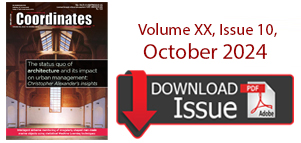March 28, 2014, World Bank, Washington DC
This one-day ‘Spatial Innovation and Good Practices’ forum was jointly convened by the World Bank and the International Federation of Surveyors (FIG) on March 28, 2014 at the World Bank’s headquarters in Washington DC as part of the ongoing collaborative activities between the Bank and FIG. The Forum was …

During the ultra-communist Khmer Rouge regime (1975-79) in Cambodia, the private ownership of land was abolished and it remained unrecognized also during the following 10-year long Vietnamese-backed Communist government (1979-89). All land-related documents, including the land register, maps and geodetic networks were systematically destroyed as well as most professionals and educated people eliminated during the tragic 1975-79 period.

The Solutions for Open Land Administration (SOLA) Open Source Software project is a 3 year trust fund project, funded through the Government of Finland and implemented by a project team within the UN FAO.
Its aim is to make computerized cadastre and registration systems based on open source software more affordable and more sustainable in developing countries.

Imagine a country without any basic administration of land – their key asset. Imagine that tenure to land and property cannot be secured, and that mortgage loans cannot be established as a basis for property improvement. Imagine that the use and development of land is not controlled through overallplanning policies and regulations.

Only 1.5bn of the estimated 6bn land parcels worldwide have land rights formally registered in land administration systems. Many of the 1.1bn slum dwellers and further billions living under social tenure systems wake up every morning to the threat of eviction. These people are the poor and most vulnerable and are excluded any form of security of tenure; they are trapped in poverty. Increasing global population and the rush to urbanisation is only going to turn this gap into a chasm.

Land administration and ict Over the past thirty years, considerable progress has been made since the initial work on first registration programs using largely analogue, methods of data capture, presentation and records management. The early adoption of total stations and electronic data recording by land surveyors, post processing using computer-aided drafting (CAD) and GIS, as well as data storage in relational database management systems have been highly successful.

There is a general consensus among the land administration professionals and different players of the economy in the developed countries and more and more in the developing world as well, that the Land Administration is one of the most important infrastructure for the economic growth and the implementation of sustainable development. This fact is proved by statistical data.

Land Administration for Sustainable Development examines global land administration systems at different levels of maturity. This examination elucidates how countries can establish basic infrastructure for the implementation of land-related policies and land management strategies that will help ensure social equality, economic growth, and environmental protection. Through its presentation of a holistic view of land management …









 (5.00 out of 5)
(5.00 out of 5)